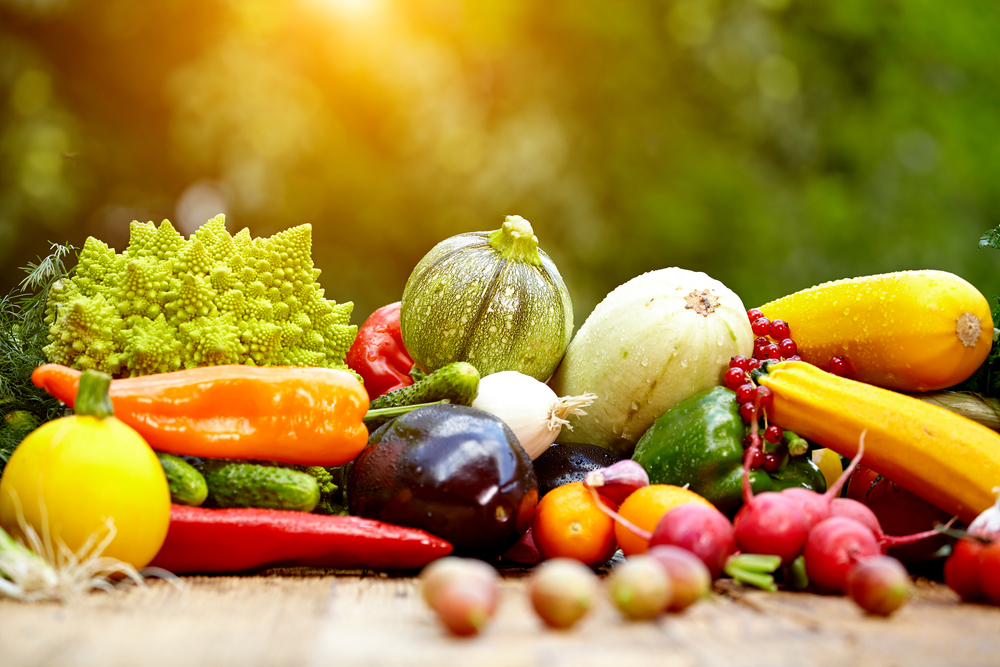Carrots are a staple vegetable in many households, but have you ever wondered if they are man-made? The answer is yes, but with some caveats.
While carrots did not originate from human intervention, their development has been heavily influenced by selective breeding techniques.
In this article, I will explore the origins of carrots, the different varieties, their nutritional benefits, and their culinary uses.
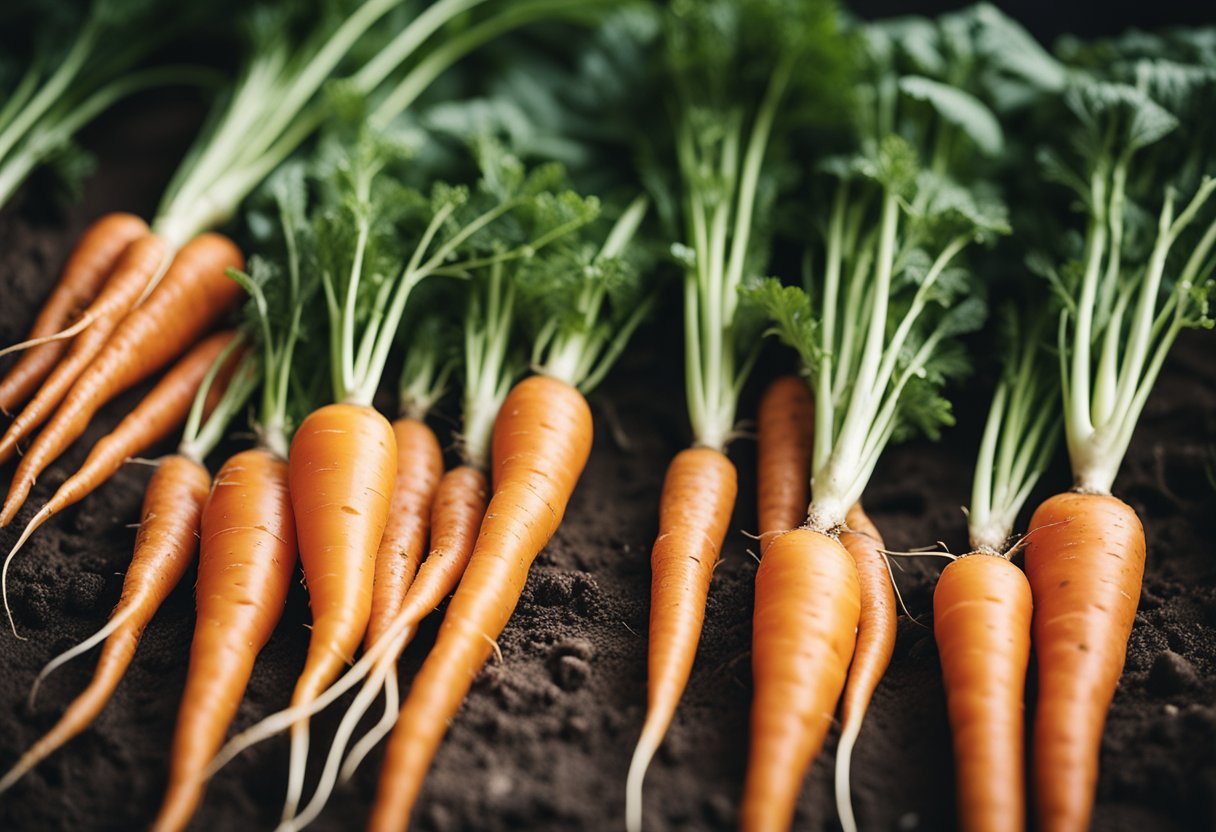
Carrots have a long and interesting history. They are believed to have originated in Central Asia over 5,000 years ago and were originally purple or yellow in color.
It wasn’t until the 16th century that orange carrots were developed in the Netherlands through selective breeding.
Today, there are over 100 different varieties of carrots, each with their own unique flavor and nutritional profile.
In this article, I will delve deeper into the different types of carrots and how they are cultivated and harvested.
Key Takeaways
- Carrots are man-made through selective breeding techniques but did not originate from human intervention.
- There are over 100 different varieties of carrots with unique flavors and nutritional profiles.
- Carrots have a rich history and are a staple vegetable in many households.
Origins of Carrots
Carrots are root vegetables that have been cultivated by humans for centuries. The wild carrot, also known as Daucus carota, is native to Europe and Central Asia.
The history of carrots can be traced back to ancient times, and it is believed that the first carrots were cultivated in present-day Afghanistan around the 10th century [1].
The earliest carrots were not the orange carrots that we know today. In fact, the first carrots were purple and white in color.
Over time, farmers selectively bred the plant to produce a more desirable and edible root. Through natural processes, the wild carrot evolved into the domesticated carrot that we eat today.
Carrots were originally grown for their leaves and seeds, which were used in medicinal and culinary applications.
It was not until later that the root became the most commonly eaten part of the plant. Early farmers selectively bred Daucus carota to get the domestic carrot that is more rampant and known nowadays [2].
Today, carrots are one of the most popular vegetables in the world. They are enjoyed raw or cooked and can be found in a variety of dishes.
While the orange carrot is the most commonly consumed variety, there are also purple, black, red, white, and yellow cultivars available [3].
In conclusion, while the wild carrot is a natural plant, the domesticated carrot that we eat today is the result of centuries of selective breeding by farmers.
The history of carrots is a fascinating one, and it is interesting to see how this root vegetable has evolved over time.
[1] Source: https://globogarden.com/is-carrot-man-made/ [2] Source: https://gardeningbank.com/is-carrot-man-made/ [3] Source: https://en.wikipedia.org/wiki/Carrot
Selective Breeding and Genetic Modification
Selective breeding is a process of human intervention that has been used for centuries to produce plants and animals with desirable traits.
Farmers have been selectively breeding carrots for centuries, resulting in the evolution of the vegetable into its current form.
The orange carrot that we consume today is a selectively bred hybrid vegetable because it was developed by farmers through selective breeding.
Selective breeding is a slow process whereby farmers select and grow crops with desired traits over time. This process involves crossbreeding plants with desirable traits to produce offspring with those traits.
Farmers then select the best offspring and continue the process over generations until they have a plant with the desired traits.
This process has been used to produce many of the fruits and vegetables that we consume today.
Genetic modification, on the other hand, involves the use of genetic engineering techniques to alter the DNA of a plant or animal.
Scientists can use genetic engineering to introduce desirable traits into a plant or animal that it would not naturally possess.
Genetic modification is a faster process than selective breeding and can produce plants with desired traits more quickly.
Carrots are not genetically modified, but they are selectively bred. This means that the orange carrot that we consume today is a result of human intervention through selective breeding techniques, not genetic engineering.
The misconception that carrots might be genetically modified could stem from the fact that some modern-day fruits and vegetables are genetically modified.
In conclusion, while carrots are not man-made, they are selectively bred. The orange carrot that we consume today is a result of human intervention through selective breeding techniques.
Genetic modification is a faster process than selective breeding, but carrots are not genetically modified.
Varieties of Carrots
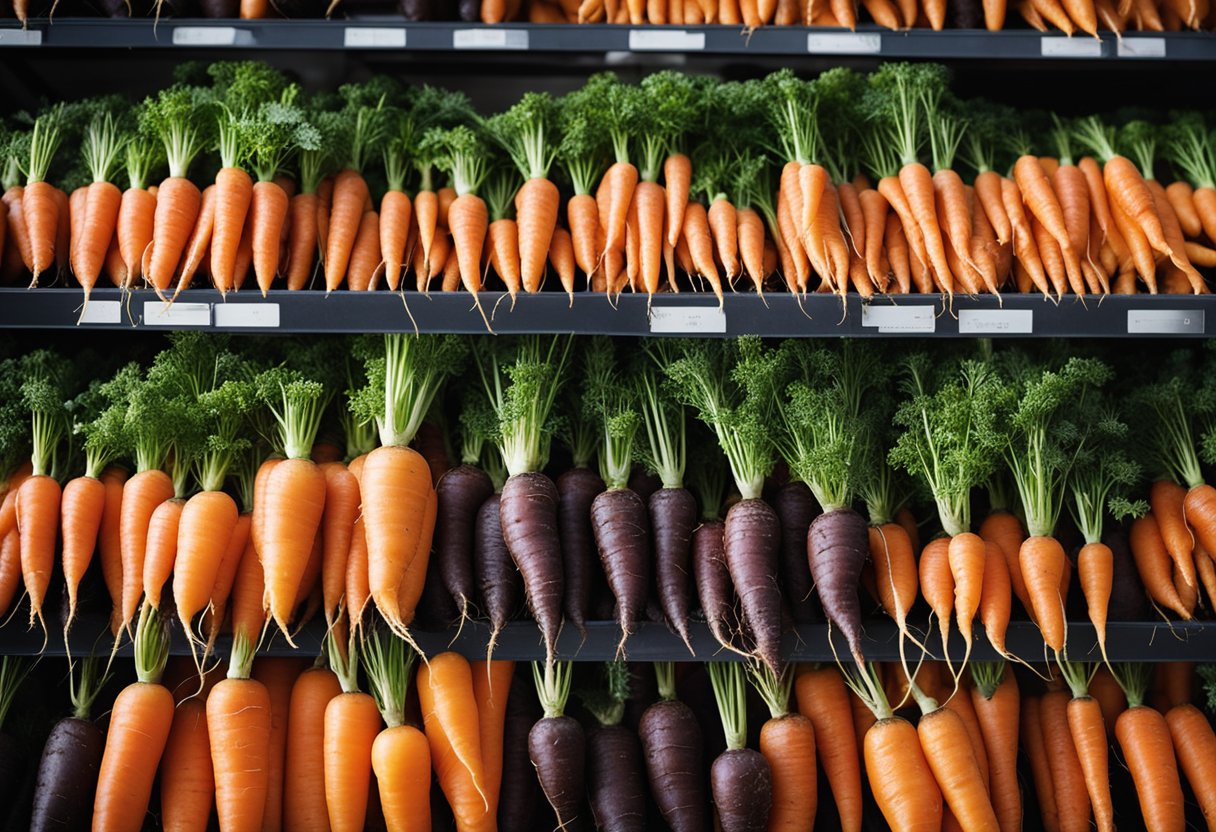
Carrots come in a variety of colors, including orange, red, yellow, white, and purple. The most common variety is the orange carrot, which is the result of selective breeding by farmers over the years.
Orange carrots are rich in beta-carotene, which is converted to vitamin A in the body.
Purple carrots, on the other hand, contain anthocyanins, which are antioxidants that give them their distinctive color.
Red carrots contain lycopene, which is also an antioxidant. Yellow carrots have a milder flavor than orange carrots and are often used in soups and stews.
White carrots, which are also known as albino carrots, have a slightly sweeter taste than orange carrots.
Carrots also come in different shapes and sizes. The most common shape is cylindrical, but some varieties can be round or conical. The size of carrots can vary from small, baby carrots to large, full-sized ones.
Some popular varieties of carrots include:
- Nantes: a sweet and tender variety that is cylindrical in shape
- Chantenay: a shorter and thicker variety that is often used for juicing or roasting
- Danvers: a long and tapered variety that is good for both fresh eating and cooking
- Imperator: a long and slender variety that is often used for processing and canning
In addition to these varieties, there are also black and white carrots, which are less common. Black carrots are a deep purple color on the outside and have a yellow-orange core.
White carrots are similar in shape and size to orange carrots but have a creamy white color.
Overall, the variety of carrots available makes them a versatile and nutritious vegetable to incorporate into your diet.
Cultivation and Harvesting
Carrots are one of the most commonly cultivated root vegetables around the world. They are grown in a variety of soil types, from sandy loam to heavy clay, but prefer well-draining soil that is rich in organic matter.
The soil pH should be between 6.0 and 7.0, which is slightly acidic to neutral.
Carrots are typically grown from seeds, which are sown directly into the soil. The seeds should be planted about 1/4 to 1/2 inch deep and spaced about 2 inches apart.
Carrots are slow to germinate, taking anywhere from 10 to 21 days to sprout.
Once the seedlings have emerged, it is important to thin them out so that each carrot has enough space to grow. The ideal spacing between plants is about 3 to 4 inches.
Carrots are a taproot vegetable, which means that the edible part of the plant is the thick, fleshy root. The stem of the carrot is not edible, but the leaves can be used in salads or as a garnish.
The time it takes for carrots to mature depends on the variety and growing conditions. On average, it takes about 70 to 80 days from planting to harvest.
The best way to determine if the carrots are ready for harvest is to gently pull up a few and check the size.
Carrots are usually harvested by pulling them up by the leaves. It is important to be gentle when harvesting to avoid damaging the roots.
Once the carrots have been harvested, they should be washed and stored in a cool, dry place.
Pests can be a problem when growing carrots. Common pests include carrot rust fly, aphids, and nematodes.
Crop rotation, using row covers, and using natural predators can help control pests without the use of harmful chemicals.
Overall, growing carrots is a rewarding experience. With the right growing conditions and care, anyone can cultivate delicious, healthy carrots right in their own backyard.
Nutritional Benefits
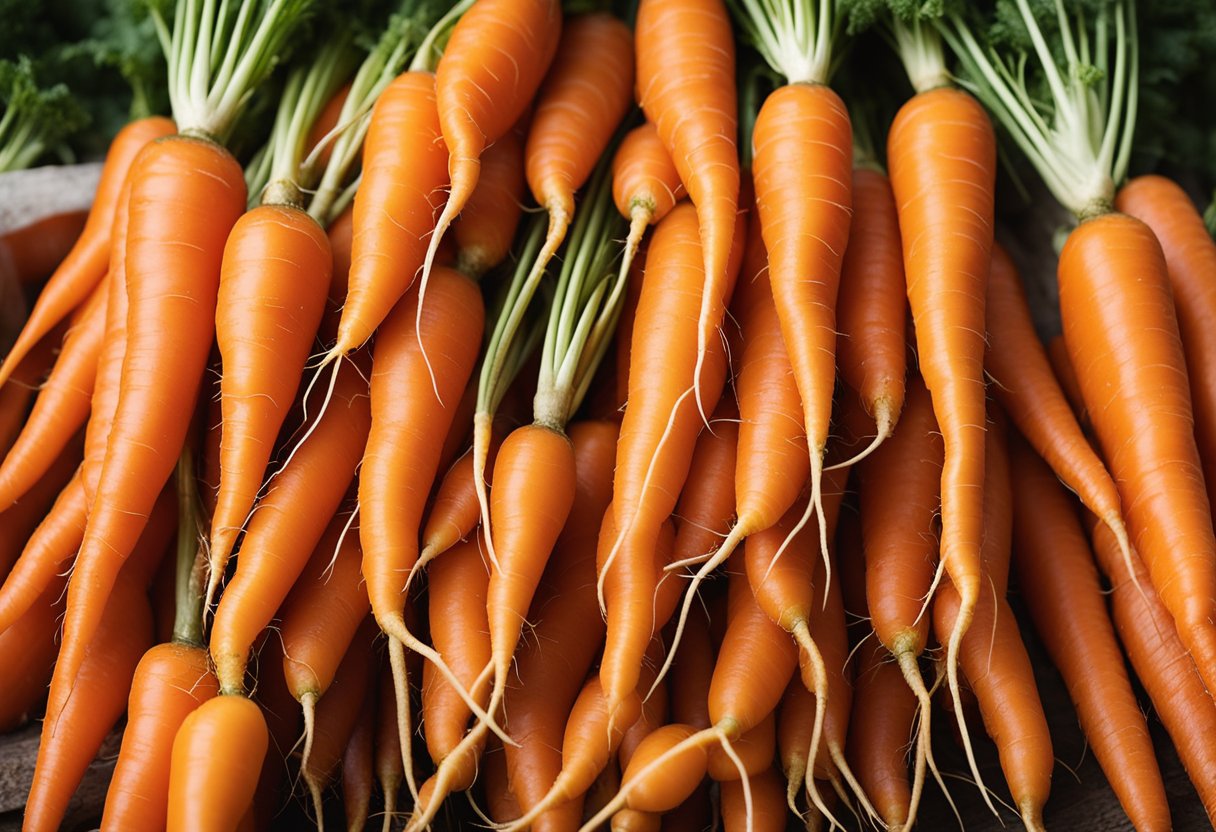
As a nutritious vegetable, carrots offer a range of health benefits. They are low in calories and high in fiber, making them a great addition to any diet.
Carrots are also a good source of nutrients such as vitamin A, lutein, zeaxanthin, and beta-carotene.
Vitamin A is essential for maintaining healthy vision, skin, and immune function. It also plays a role in bone growth and development.
A 1-cup serving of chopped raw carrots provides over 400% of the daily recommended intake of vitamin A.
Lutein and zeaxanthin are antioxidants that can help protect the eyes from damage caused by harmful blue light. They are also important for maintaining healthy skin and reducing the risk of certain types of cancer.
Beta-carotene is a precursor to vitamin A and also acts as an antioxidant in the body. It may help reduce the risk of heart disease and certain types of cancer.
Carrots are also a good source of fiber, which can help promote healthy digestion and reduce the risk of chronic diseases such as heart disease and diabetes.
In addition to these nutrients, carrots also contain small amounts of other important vitamins and minerals, such as potassium, vitamin K, and magnesium.
Overall, carrots are a nutritious and delicious vegetable that can provide a range of health benefits when included as part of a balanced diet.
Culinary Uses
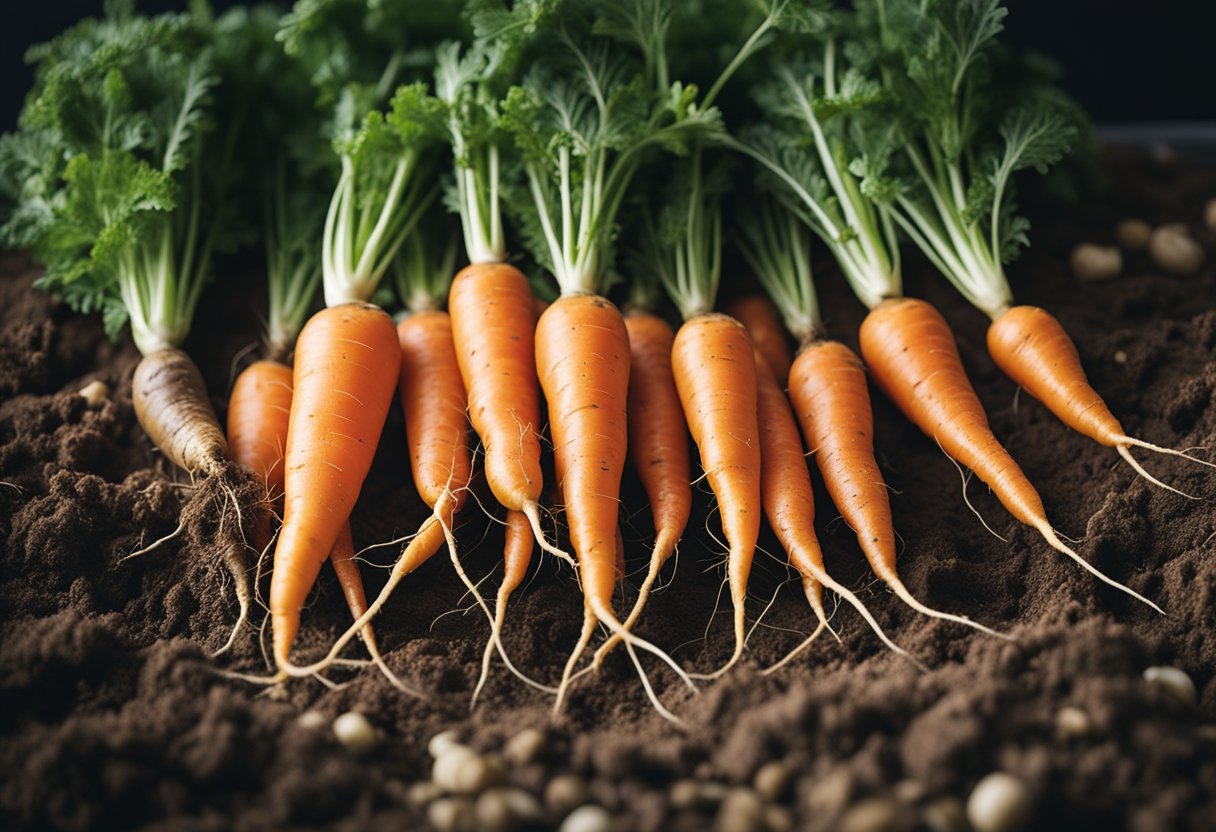
Carrots are a versatile vegetable that can be used in a variety of culinary applications. They are known for their sweet and earthy taste, which makes them a popular ingredient in many recipes.
Carrots come in a range of colors, including orange, yellow, purple, and white, which can add a pop of color to any dish.
Carrots can be eaten raw or cooked, and they can be used in a variety of dishes, including stews, soups, and salads.
They can also be roasted, steamed, or boiled, which can enhance their natural sweetness and make them even more tender.
One of the most popular ways to enjoy carrots is to use them in recipes for carrot cake or carrot muffins.
These sweet treats are a delicious way to enjoy the natural sweetness of carrots and are a great way to incorporate more vegetables into your diet.
Carrots can also be used as a natural food coloring. For example, adding grated carrots to a dish can give it a vibrant orange color, which can be particularly appealing in stews and soups.
Overall, carrots are a tasty and versatile vegetable that can be used in a range of culinary applications.
Whether you are looking to add some color to your dishes or want to enjoy the natural sweetness of this tasty vegetable, there are plenty of ways to incorporate carrots into your diet.
Carrots in Popular Culture
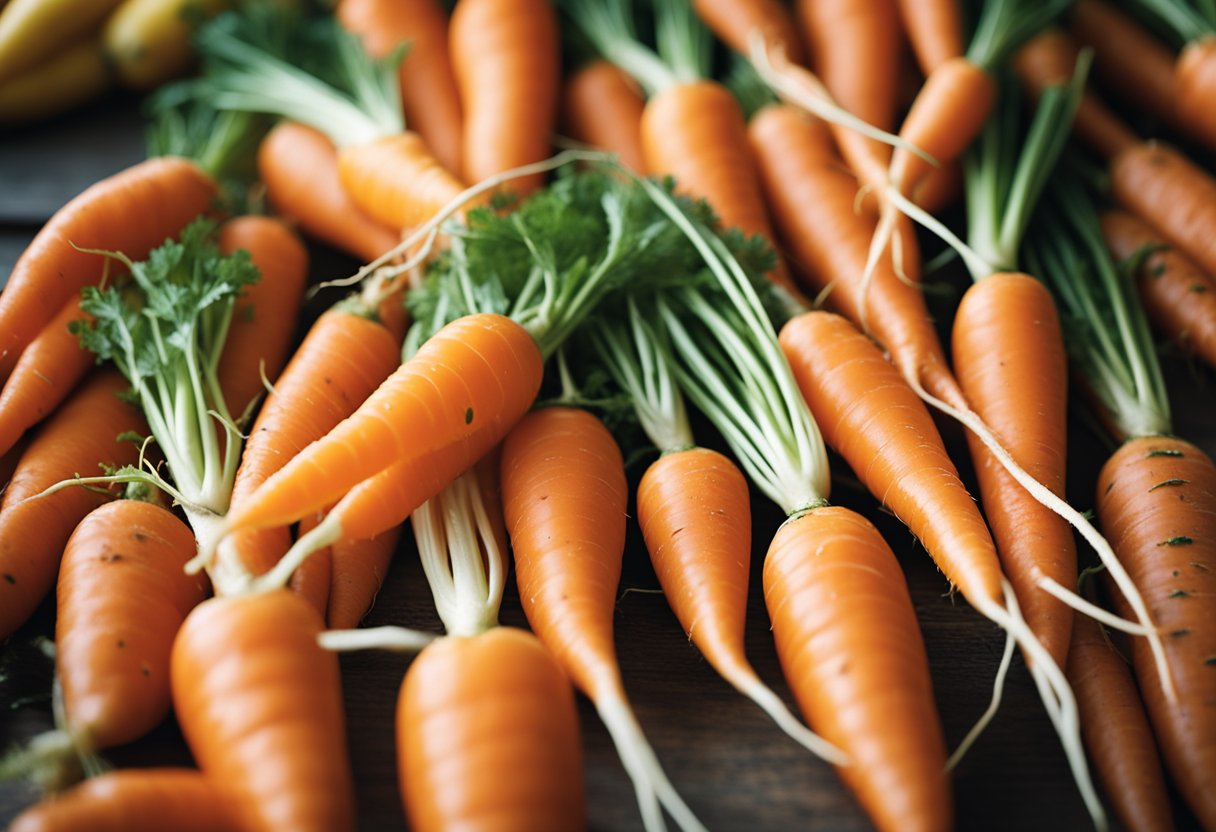
Carrots have been a popular vegetable for centuries and have played a significant role in popular culture. In Dutch culture, carrots are known as “peen,” and they have been a staple food item for centuries.
In fact, the Netherlands is one of the largest carrot producers in the world, with over 70% of the carrots grown in the country being exported to other countries.
The Dutch have also been credited with breeding the first orange carrots in the 16th century. The orange color was chosen in honor of William of Orange, who led the Dutch Revolt against Spanish rule.
However, it is important to note that while the Dutch did breed the first orange carrots, they were not the first to cultivate carrots.
In popular culture, carrots have been associated with good eyesight. While it is true that carrots contain vitamin A, which is essential for eye health, the idea that eating carrots will improve eyesight is a myth.
This myth was actually propagated by the British during World War II to explain why their pilots had such good aim.
Carrots have also been a popular ingredient in many dishes, from salads to stews. They are versatile and can be eaten raw or cooked, and their sweet flavor makes them a favorite among many people.
Additionally, carrot juice has become a popular health drink due to its high nutrient content.
In conclusion, carrots have played a significant role in popular culture and have been a staple food item for centuries.
The Dutch have been credited with breeding the first orange carrots, but it is important to note that carrots have been cultivated for thousands of years.
While the myth that carrots improve eyesight has been debunked, they are still a nutritious and versatile vegetable that can be enjoyed in many dishes.
Other Man-Made Vegetables

While carrots may be one of the most well-known man-made vegetables, there are many others that you may not have realized were created through selective breeding. Here are a few examples:
Broccoli
Broccoli is a member of the Brassica family, which also includes cauliflower, kale, and Brussels sprouts.
All of these vegetables were selectively bred from wild mustard plants to create the varieties we know today. Broccoli, in particular, was developed in Italy in the 16th century.
Corn
Corn, or maize, was first domesticated in Mexico over 9,000 years ago. Since then, humans have selectively bred it to create a wide variety of colors, textures, and flavors.
Today, most of the corn we eat is used for animal feed and processed foods, but there are still many heirloom varieties available for human consumption.
Cauliflower
Cauliflower is another member of the Brassica family, and was selectively bred from wild cabbage plants. It has been cultivated for centuries, and was a popular vegetable in ancient Rome.
Today, there are many different varieties of cauliflower available, including purple, orange, and green.
Grape
Grapes are one of the oldest cultivated fruits, with evidence of domestication dating back over 8,000 years.
Over time, humans have selectively bred grapes to create hundreds of different varieties, each with its own unique flavor and characteristics. Today, grapes are used to make wine, juice, and a variety of other products.
Kiwi
Kiwi, also known as Chinese gooseberry, was first cultivated in China in the 19th century. It was later brought to New Zealand, where it was selectively bred to create the varieties we know today.
Kiwi is now grown in many parts of the world, and is known for its sweet, tangy flavor and high nutritional content.
Overall, man-made vegetables have been an important part of human agriculture for thousands of years.
By selectively breeding plants to create new varieties, humans have been able to improve the taste, nutritional content, and overall quality of our food.
While some may argue that these changes are unnatural, they have allowed us to feed a growing population and create a more diverse and interesting food system.
Frequently Asked Questions
Are carrots a naturally occurring vegetable?
Yes, carrots are a naturally occurring vegetable. The first evidence of carrot cultivation dates back to the 10th century in present-day Afghanistan.
Wild carrots, also known as Queen Anne’s lace, can still be found in nature, but they are nothing like the carrots we know and love today.
What is the history of carrots?
Carrots have a long and interesting history. The first carrots were purple or white, and they were originally grown for medicinal purposes.
It wasn’t until the 17th century that orange carrots were developed in the Netherlands. These new carrots were sweeter and more palatable than their predecessors, and they quickly became popular throughout Europe.
How have carrots been selectively bred?
Carrots have been selectively bred for centuries to produce the sweet, crunchy, and brightly colored vegetables we know today.
Selective breeding involves choosing plants with desirable traits and breeding them together to create offspring with those traits. Over time, this process can lead to significant changes in the characteristics of a plant.
What is the nutritional value of carrots?
Carrots are a good source of several important nutrients, including vitamin A, vitamin K, potassium, and fiber. They are also low in calories, making them a great choice for people who are watching their weight.
Are there any health benefits to eating carrots?
Yes, there are several health benefits to eating carrots. Carrots are high in antioxidants, which can help protect your cells from damage caused by free radicals.
They are also a good source of fiber, which can help lower your risk of heart disease and improve your digestive health.
What are some common recipes that use carrots?
Carrots are a versatile vegetable that can be used in a variety of recipes. Some common recipes that use carrots include carrot cake, roasted carrots, carrot soup, and carrot salad.
Carrots can also be used as a healthy snack, either raw or cooked.







